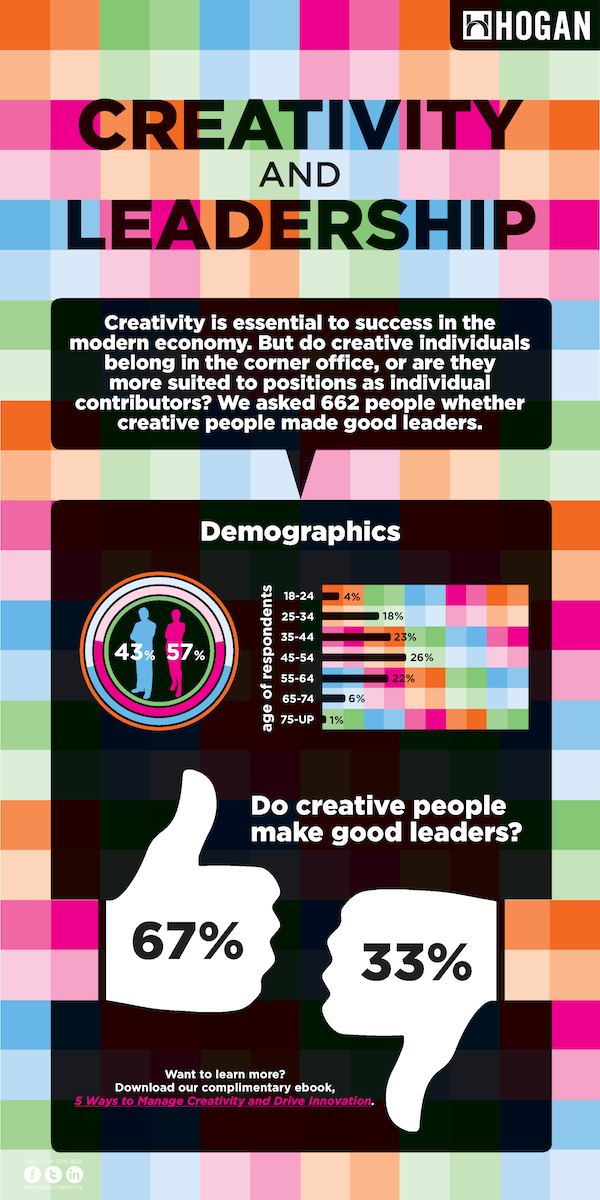The conversation around women in leadership is not new, yet we find the topic continues to be at the forefront of leadership discussions. Dr. Tomas Chamorro-Premuzic recently did a blog post regarding The Under-Representation of Women in Leadership which highlighted organizations inability to distinguish competence from confidence. I tend to agree with Dr. Chamorro-Premuzic around the debate for women to “lean in” and adopt the dysfunctional characteristics we find to be prevalent in our male leaders. This concept only perpetuates the issue of choosing arrogance over humility in our leadership; right or wrong.
Hogan has defined leadership as the ability to build and maintain a high-performing team that beats the competition. To build a high-performing team, the leader must be someone the team is willing to follow. This allows us to assess performance with respect to the overall team performance. Taking this view on leadership and the recently released paper The Case for Investing in Women by the Anita Borg Institute (ABI), we find there are some key advantages to women in leadership roles.
According to The Case for Investing in Women, having a priority on hiring women manifests higher organizational and financial performance. In particular, the following outcomes have been noted (see article for full details):
- Fortune 500 companies with at least three women directors saw:
- Return on invested capital increased by at least 66%
- Return on sales increase by at least 42%
- Average return on equity increase by at least 53%
These and other data points in the report provide compelling information concerning the advantages of women in leadership. Interestingly, as of 2010, women held 47 percent of the total U.S. labors force (United States Department of Labor), however, when it comes to women in CEO positions the numbers are dismal. Women represent 4.6% of the Fortune 500 CEO positions (Catalyst 2014).
| CEO | Company | Rank |
| Mary Barra | General Motors | 7 |
| Meg Whitman | Hewlett Packard | 15 |
| Virginia Rometty | IBM | 20 |
| Patricia A. Woertz | Archer Daniels Midland Company | 27 |
| Indra K. Nooyi | PepsiCo, Inc | 43 |
| Marillyn Hewson | Lockheed Martin | 59 |
| Ellen J. Kullman | DuPont | 72 |
| Irene B. Rosenfeld | Mondelez International | 88 |
| Phebe Novakovic | General Dynamics | 98 |
| Carol M. Meyrowitz | The TJX Companies, Inc. | 115 |
| Ursula M. Burns | Xerox Corporation | 131 |
| Lynn J. Good | Duke Energy | 145 |
| Deanna M. Mulligan | Guardian | 238 |
| Sheri S. McCoy | Avon Products Inc. | 252 |
| Debra L. Reed | Sempra Energy | 281 |
| Denise M. Morrison | Campbell Soup | 338 |
| Heather Bresch | Mylan | 374 |
| Ilene Gordon | Ingredion Incorporated | 386 |
| Jacqueline Hinman | CH2M Hill | 415 |
| Kathleen M. Mazzarella | Graybar Electric | 465 |
| Gracia C. Martore | Gannett | 467 |
| Mary Wilderotter | Frontier Communications | 492 |
| Marissa Mayer | Yahoo | 494 |
If the research strongly suggests the need for women in leadership positions, then where are they? Lately, we have received questions around the lack of upward movement of women into executive levels. Organizations with a targeted approach and programs created to provide development opportunities for women to move into Executive ranks are finding their efforts moving slowly. Leadership programs, along with mentorships, job previews, and peer support groups to guide and educate women have been established within many companies and, yet, organizations find themselves with little movement among their female population. Organizations are starting to ask themselves, why?
To tackle this topic, my colleagues, Morgan Meister and Jennifer Lowe will explore how we got to this point, what organizations are doing right and wrong, and how to invest in future women leaders.


 After a rigorous selection process designed to gauge
After a rigorous selection process designed to gauge  It seems more trouble is brewing in the military’s upper ranks. In the same month the Army released a report detailing its problem with toxic leaders and their role in the rash of soldier suicides over the past year, the
It seems more trouble is brewing in the military’s upper ranks. In the same month the Army released a report detailing its problem with toxic leaders and their role in the rash of soldier suicides over the past year, the  Did you know that trust in one’s superior predicts the entire range of desirable organizational outcomes: productivity, job satisfaction, and organizational commitment? Good leaders can build trust by embodying four essential qualities: integrity, judgment, competence, and vision.
Did you know that trust in one’s superior predicts the entire range of desirable organizational outcomes: productivity, job satisfaction, and organizational commitment? Good leaders can build trust by embodying four essential qualities: integrity, judgment, competence, and vision.
